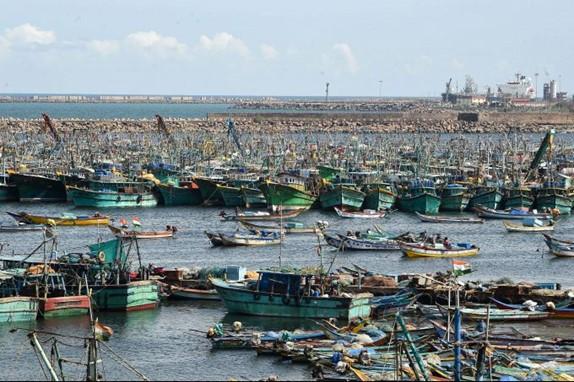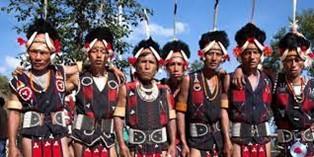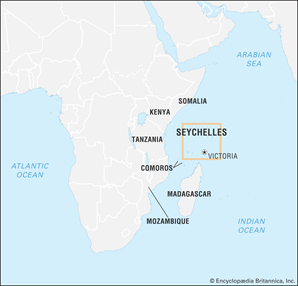Friday, 16th April 2021
First Passenger Train in India
First Passenger Train in India- April 16 marks the date of the first passenger train that ran in India the year 1853. Covering 34 kms, the train ran from Bombay to Thane. The planned expansion of railways was aimed to consolidate and integrate British empire in the Indian subcontinent in terms of linking source of raw material and market for finished goods.
It was also supposed to facilitate faster mobilization of troops at all corners of the country. At the same time, the railways inadvertently contributed immensely to the spirit of nationalism and growth of unity in a diverse 19th century India, which provided the force behind India’s independence.
Study flags ‘labour issues’ in sugarcane producing states
In News
A recent study has raised the issue of child labour and forced labour in India, especially for sugarcane producing states of Bihar, Karnataka, Maharashtra, Punjab, and Uttar Pradesh. The study was commissioned by the United Nations Development Programme (UNDP) and The Coca-Cola Company.
Key Findings of the Study
- Ambiguity over definition of child labour: The study noted that the existing ambiguity over definition of child labour has meant that the authorities often discounted underage child labour as “children helping parents in the field”.
- Interventions have focused on farming techniques: Labor welfare measures have largely been ignored.
- Other labour issues: Other labour issues impacting the sugarcane sector include bonded labour, low wages and no separate payment for extra labour.
Labour issues in the sugarcane sector
- Oppressed and exploited harvesters: A study has found that while the expansion of sugarcane fields and sugar mills on a cooperative basis has become a replica for agro-industrial development, the harvesters remain highly oppressed and exploited.
- Indebtedness: Lack of employment opportunities in native villages, infertile agricultural land, conflict over land and water, combined with caste system and gender inequality are some of the crucial factors for indebtedness among sugarcane harvesters.
- Minimum wages: The average daily wages of sugarcane workers in states like Gujarat turns out to be lower than the statutory daily minimum wage for agricultural workers. Moreover the wages for agricultural workers also vary between the states.
- Widespread prevalence of child labour: According to the recent global estimates by the International Labour Organisation, agriculture is the largest employer of child labourers. The United States Department of Labor links sugarcane production, to child labour in 17 countries, some of which also happen to be the largest exporters of sugarcane, including India, Brazil, Thailand and Cambodia.
- Health impact on children: The most common tasks performed by children in sugarcane farming are hazardous in nature such as the application of agro-chemicals for crop protection and manual harvesting which is done with the help of sharp tools often leading to injury. The burning of cane also leads to inhalation of fumes and dust, which can cause respiratory diseases and irritation of the skin or eyes as long-term consequences.
Way ahead
- Use of technology: Coca Cola had launched a project in 2018, to use blockchain’s digital ledger technology to create a secure registry for workers that will help fight the use of forced labour.
- Education for children: Sustainable, meaningful and relevant education and vocational skills for children of migrant workers in agriculture in the source as well as destination areas will help to address the issue of child labour.
- Supporting the activities of NGO’s: Many NGOs like Bachpan Bachao Andolan, ChildFund, CARE India, Kailash Satyarthi Children Foundation etc. have been working to eradicate child labour in India. State level authorities need to support the activities of these grassroot level organisations to deal with the issue.
Sources
https://www.oxfamindia.org/blog/structural-injustice-sugar-cane-agriculture
Hope India reviews stand on RCEP: Singapore Foreign Minister
In News
Singapore’s Foreign Minister Vivian Balakrishnan recently said that he hoped India would “reassess” its stand on regional trading agreements such as the Regional Comprehensive Economic Partnership (RCEP) pact that India withdrew from in 2019.
India’s Presence in RCEP
- Singapore’s Foreign Minister while speaking at the Raisina Dialogue emphasized that India had a crucial role in helping the region build inclusive architecture at a time of increasing global instability.
- The Minister mentioned that pacts like the RCEP will provide Indian companies a platform to showcase their strengths across even larger markets.
- Giving the rising US-China rivalry it is critical to maintain ASEAN centrality in Southeast Asia amid the geopolitical competition. India’s participation in the RCEP framework will help build regional architecture that is open and inclusive.
|
What is RCEP? · The RCEP (Regional Comprehensive Economic Partnership) came into force in November 2020. The signatories of the agreement include 10 ASEAN countries – Singapore, Thailand, Vietnam, Cambodia, Indonesia, Malaysia, Brunei, Laos, Myanmar and the Philippines and 5 key partners (China, Japan, South Korea, Australia and New Zealand). Aims and Objectives of RCEP · To lower tariffs, open up trade in services and promote investment to help emerging economies. · To help reduce costs and time for companies by allowing them to export a product anywhere within the bloc without meeting separate requirements for each country. · It also includes intellectual property but does not cover environmental protections and labour rights.
|
Reasons for India’s withdrawal from RCEP
- Unfavourable balance of trade from previous FTA’s: India’s stance on the deal comes as a result of learnings from unfavourable trade balances that it has with several RCEP members, with some of which it even has FTAs (Free Trade Agreements). An internal assessment by the government has revealed that the growth in trade with partners over the last five financial years was a modest 7.1%. While there has been a growth rate in both imports from and exports to these FTA partners, the utilisation rate of FTAs both for India and its partners has been moderate across sectors.
- Surge of Chinese imports: Major issues that were unresolved during RCEP negotiations were related to the exposure that India would have to China. This included India’s fears that there were inadequate protections against surges in imports. India also felt that a circumvention of the rules of origin criteria was possible and this would lead to some countries dumping their products by routing them through other countries that enjoyed lower tariffs.
- Protection of Domestic sectors: The RCEP binds countries to reduce the current level of tariffs to zero within the next 15 years and India was apprehensive of the impact of this move on sectors like dairy and steel. The dairy industry was expected to face stiff competition from Australia and New Zealand.
- Lack of assurance of market access for India: RCEP also lacked clear assurance over market access issues in countries such as China and non-tariff barriers on Indian companies.
- Non-acceptance of auto trigger mechanism: India was unable to ensure countermeasures like an auto-trigger mechanism to raise tariffs on products when their imports crossed a certain threshold.
Sources
https://indianexpress.com/article/explained/india-out-of-rcep-china-economy-trade-angle-7053877/
https://epaper.thehindu.com/Home/ShareArticle?OrgId=GCT8FUUKN.1&imageview=0
Ordinance on Delhi-NCR air quality management re-promulgated
In News
The Air Quality Management in the National Capital Region and Adjoining Areas Ordinance 2020, which lapsed recently has been re-promulgated.
Air Quality Management in National Capital Region and Adjoining Areas Ordinance, 2020:
- Objective - curbing air pollution in Delhi NCR and the adjoining areas of the Indo Gangetic Plain.
- The Ordinance sets up a statutory authority - the18 member Commission for Air Quality Management in National Capital Region (NCR) and Adjoining Areas.
- The Commission shall be headquartered in New Delhi and shall have representatives from the states of Haryana, Rajasthan, Uttar Pradesh and Punjab ("adjoining states").
- It shall function under the overall supervision and guidance of the Central Government.
- The ordinance lays down hefty penalty provisions for farmers, industries, power plants or other polluters, upto Rs 1 crore and jail term up to five years.
- Through the Ordinance, the Centre has also dissolved the Supreme Court empowered Environment Pollution (Prevention and Control) Authority (EPCA) for the NCR.
The Re-Promulgated Ordinance
- The repromulgated ordinance, gives power to the commission for air quality management (CAQM) to impose and collect penalties (environmental compensation and not hefty penalties) from farmers causing air pollution by stubble burning.
- However, the hefty penalty provisions for industries, power plants or other polluters, as mandated in the original Ordinance, will continue as an “offence” punishable with jail term up to five years or with fine, which may extend up to Rs 1 crore or
- The re-promulgated ordinance has expanded the CAQM from a 18 member to a 21 member body by giving three additional representations to stakeholders from agriculture, industry, transport or construction sectors as members of the body.
|
EPCA vs The Commission § Jurisdiction: The EPCA, set up in 1998, looked after the NCR while the purview of the Commission extends to “adjoining areas as well”. § Statutory Status: EPCA was not a statutory body but drew legitimacy from the Supreme Court. It did have the authority to issue fines or directions and guidelines to the governments in other states. § EPCA had no state representatives, but just two permanent members while the Commission, on the other hand, will have representation from the state. § Performance: EPCA has failed in cleaning the air even after being in force for more than 2 decades. However, the key contributions of the EPCA include - the notification of the Graded Response Action Plan that lists out measures to be taken in case of worsening pollution, construction of the Regional Rapid Transport System and early adoption of BS VI fuel standards. |
Primary source: https://timesofindia.indiatimes.com/city/delhi/ordinance-on-ncr-air-quality-management-repromulgated/articleshow/82074384.cms
Fishing Ban from 15 April

Fishing Ban from 15 April- In order to support fish breeding, Tamil Nadu state has imposed a 61-day ban on fishing by mechanized trawlers. The country boats are not prohibited from fishing as they fish close to the shore i.e., less than 12 nautical miles. During the ban period, fishermen holding membership cards would be given a relief amount to support their livelihood. The fishing ban is essential to protect the gravid females and the juveniles to maintain the fish population in the sea.
Municipal Green Bond
In News
Ghaziabad Municipal Corporation (Uttar Pradesh) issued India’s first-ever municipal green bond. Money will be used to recycle water by setting up a tertiary water treatment plant and supply piped water through water-meters.
Municipal Green Bonds (MGB)
- Municipal bond (also called as Muni Bond) is a bond (a debt instrument) issued by a city or other local government (ULBs), or their agencies (SPVs etc.).
- Its purpose is to raise money to fund city infrastructure such as road, water supply, sewerage etc.
- When the city issues a bond to fund specific projects having positive environmental and/or climate benefits, such a muni bond is called as Municipal Green Bond.
- MGBs are same as ordinary muni bonds except that MGBs have specific end use to fund climate resilient infrastructure and other environmentally beneficial projects.
- Projects Eligible for MGBs: This may include – renewable energy, energy efficiency, pollution prevention and control (including waste water treatment, greenhouse gas control etc), Clean Transportation etc.
Opportunities for MGB Market
- Rapid Urbanisation in India: As India rapidly urbanizes with more than 590 million to live in cities by 2030 (more than double the corresponding number in 2001), urban infrastructure financing is of key significance.
- Need for Urban Infrastructure Financing: It is estimated that between 2012 and 2031, India will need to invest $653 billion, equivalent to 46% of the country’s 2012 GDP to meet its urban infrastructure requirements. In contrast, India’s municipal expenditure has remained substantially low, while it should be growing.
- Government Efforts towards Sustainable Urbanisation: With the formalization of India’s Nationally Determined Contribution, and the launch of national missions such as Smart Cities Mission, Swacch Bharat Mission, and National Solar Mission, and AMRUT, the focus on clean and climate resilient infrastructure is larger than ever.
Thus, the green bond market becomes an increasingly attractive opportunity for Indian municipalities to leverage funds for meeting clean and climate-resilient urban infrastructure targets for India.
Advantages of Issuing and Investing in MGBs
- Green bonds expand the quantum of clean energy finance and broaden investor base: Given the huge investment needed to scale renewable energy, existing traditional financing sources such as domestic bank loans are not sufficient to support capacity addition.
- Green bonds provide access to low cost, long term capital: Green bonds are cost-competitive with other bonds and can provide capital at a lower cost than commercial bank loans.
- Green bonds increase liquidity and drive green investment by enabling refinancing: Green bonds offer a strategy for refinancing existing loans allowing proceeds to be used for further investment in renewable energy and other sustainable development projects.
- Green bonds create investment pipelines to meet climate commitments: Investors are increasingly focused on integrating Environment, Social and Governance (ESG) factors into their investment processes.
Key Barriers
- Credit Rating of Municipal Bonds (MBs) and MGBs: The municipal bonds in the debt market have poor ratings. Out of the 94 cities evaluated by agencies such as CRISIL, only 55 received investment-grade ratings while the remaining 39 scored below-average.
- Poor Credit worthiness of Cities: City ratings are equivalent to bond ratings. This means that the credit rating is assigned based on the assets and liabilities of ULBs, inclusive of revenue streams, resources available for capital investments, and other governance practices. Poor state of these factors affects rating of MGBs adversely.
- Lack of Understanding of MB/MGB: There’s still a lack of accepted taxonomies, defining ‘what is green’ across different asset classes and industries. Hence, issuers and bankers remain cautious about financing new asset classes in the green bond market.
- The stringent regulatory requirements as mandated by SEBI such as credit rating, net worth etc. bars many of the smaller ULBs to issue such MBs/MGBs.
- Lack of Trained professionals: The poor governance of ULBs and weaker administrative capacity further hampers talented human resource to fulfil necessary accounting works for MBs/MGBs.
Steps taken for Promoting Municipality Bonds and MGBs
- The Ministry of Housing and Urban Development is compiling a database of audited annual accounts in line with international standards for local bodies for the first time.
- These efforts are being made to attain higher credit ratings to attract investors—only possible through financial transparency.
- In 2015, SEBI rolled out a new regulatory framework for issuing of Municipal debt securities.
- SEBI further amended these norms in 2019 to ease down the regulations and facilitate the fund raising through municipal bonds.
- RBI and SEBI has allowed FPI investment in municipal bonds.
- SEBI has also put in place disclosure norms for issuance and listing of green bonds which aims to facilitate and promote such bonds.
- Under the Atal Mission for Rejuvenation and Urban Transformation (AMRUT) scheme, ULBs are encouraged to tap the bond market.
- Bonds help ensure improved credit profiles, direct transfer of funds by the Centre, transparency and efficient revenue generation.
Conclusion
- With the plight of the COVID-19, revenue generation and state finances have come to a virtual standstill, hampering the funding of ULBs. In order to address this, the reforms recommended by the 15th Finance Commission (which makes it mandatory for urban local bodies to submit audited accounts by linking them to grant disbursement) must be implemented.
- Transparency within ULBs will increase their credit worthiness, thereby improving their prospects of floating Muni bonds, enabling them to contribute towards building resilient infrastructure as envisioned under Atmanirbhar Bharat Abhiyan.
Primary Source
https://www.climatebonds.net/files/files/Green%20City%20Playbook.pdf
https://www.theweek.in/news/india/2020/09/24/municipal-bonds-for-an-aatmanirbhar-urban-india.html
Secondary Sources
https://www.sebi.gov.in/sebi_data/meetingfiles/1453349548574-a.pdf
https://indianexpress.com/article/explained/vadodara-municipal-bonds-explained-7116337/
Register of Indigenous Inhabitants of Nagaland (RIIN)
- Context- The Government of Nagaland has decided to set up a Register of Indigenous Inhabitants of Nagaland (RIIN) with the aim of preventing fake indigenous inhabitants’ certificates that are used for seeking jobs and benefits of government schemes.
- The RIIN will be the master list of all indigenous inhabitants of the state finalized and each indigenous inhabitants of the state would be issued a barcoded and numbered Indigenous Inhabitant Certificate.
- It will be prepared after an extensive survey with the help of a village-wise and ward-wise list of indigenous inhabitants under the supervision of each district administration.
- The RIIN will also be integrated with the online system for Inner Line Permit, a temporary document that non-inhabitants are required to possess for entry into and travel in Nagaland.
- No fresh indigenous inhabitant certificate will be issued after the RIIN is completedexcept for children born to the State’s indigenous inhabitants who will be issued certificates along with birth certificates.

Primary source: https://www.thehindu.com/news/national/other-states/tribal-body-flags-concerns-over-nagalands-version-of-nrc/article34314341.ece
Monkeydactyl
- Context- fossil of first-known flying dinosaur with opposable thumbs discovered in China.
- Researchers have described this fossil of pterosaur species (flying reptiles) with opposable thumbs possibly as earliest-known instance of the limb.
- Along with humans, some ancient monkeys and apes have opposable thumbs.
- This is the reason that humans are able to hold a pen, unscrew an earring stopper, or put a thread through a needle hole.
- The grasping hands of primates developed as a result of their life in the trees as opposable thumb made it easier for the common ancestor of all primates to cling on to tree branches.

Primary source: https://indianexpress.com/article/explained/explained-what-is-monkeydactyl-the-flying-reptile-with-the-oldest-opposable-thumbs-7272513/
Hydrogen Roundtable
- Context- Meeting under the title “Hydrogen Economy- the Indian Dialogue-2021”
- The agenda of the meeting is to discuss emerging hydrogen ecosystems and exploring opportunities for collaboration, cooperation and coalition.
- The Hydrogen Roundtable will focus on policy roadmaps, mapping demand and supply of Hydrogen, discussing the potential of Hydrogen from multiple sources and its relevance in national energy transitions.
- It is being organized by The Energy Forum (TEF) and the Federation of Indian Petroleum Industry (FIPI) under the aegis of Ministry of Petroleum and Natural Gas

Primary Source: https://pib.gov.in/PressReleasePage.aspx?PRID=1711805
In West Asia, where US and China’s interests intersect - HT
Essence - Editorial is presenting analysis on Chinese foreign minister Wang Yi’s recent six-nation tour of West Asia. This is driven by China’s expanding interests, China-United States (US) competition and geopolitical churn underway after Joe Biden’s election. Instability in West Asia would not only hurt the progress of the Belt and Road Initiative but also China’s energy imports. Biden has adopted a tougher position on Saudi Arabia compared to Trump. He ended US support for the war in Yemen and made public an intelligence report on the killing of journalist Jamal Khashoggi. It appears that the Riyadh-Washington relationship will remain difficult. This has given more space for China to play a greater role in the region. Beijing wants to do more, but is not keen on replicating Washington’s political and military engagement in the region. In fact, China continues to remain wary of the ethnic and political fault lines inWest Asia. The challenge for Beijing will remain in deepening its stake while avoiding getting caught up in the region’s political disputes.
Why you should read this article?
- To know about the recent changes in geopolitics of West Asia, in shadow of regime change in USA.
- To know about the strategic advantages which China is looking for, by expansion in west Asia.
- To understand recent issues connected to Iran nuclear deal.
Transitioning from coal won’t be easy - IE
Essence - On March 3, UN Secretary General Antonio Guterres urged wealthy nations to end coal use by 2030. On March 12, Jayant Sinha, former Minister of State for Finance, submitted a private bill to the Lok Sabha which urged the Indian government to commit to a net-zero emissions target by 2050. This article analyses daunting challenges in the context of India’s ambition/global pressure for net zero emission.
Why you should read this article?
- Understand the broader social and economic consequences of transitioning to clean energy.
- Briefly know about coal phaseout plans adopted across countries like Germany, US and Canada.
- Identify challenges with respect to India for transitioning from coal such as huge loss of employment, loss to the state and district exchequer, inadequate information on factors like education, skill levels, willingness to migrate, and caste which makes it difficult to finance the transition, etc.
Forest Rights Act, 2006: Distributing land deeds to tribal people in Tripura
Brief Background
- During British colonial rule in India, nearly 25% of land surface were brought under direct control of the state depriving the tribal population rights over forest land
- To undo the historical injustice, The Scheduled Tribes and Other Traditional Forest Dwellers (Recognition of Forest Rights) Act, 2006 (Forest Rights Act) was promulgated.
- Statistics under FRA point that of the total claims received, only 39% have been accepted, while 47% have been rejected and 13% have not been decided.
Case of Tripura
- Tripura holds the highest record of land deeds distributed under the Forest Rights Act in the country.
- Over 1.91 lakh claims were received from forest dwelling families and of these, over 1.24 lakh families have been benefitted with land ownership due to the successful implementation of the Forest Rights Act, 2006.
Outcome
- Impressive economic benefits: Tribal families have benefited from fisheries, horticulture etc when granted access to forest resources.
- Better management of forest resources due to development of stake-holder mentality in management of forest.
- Strengthened Market For MFP as institutional mechanisms have been created for value addition.
Where can this case study be used?
Innovative case study for providing rights to tribal, better management of forest, improving the forest management, welfare of welfare section.
Share the article
Get Latest Updates on Offers, Event dates, and free Mentorship sessions.

Get in touch with our Expert Academic Counsellors 👋
FAQs
UPSC Daily Current Affairs focuses on learning current events on a daily basis. An aspirant needs to study regular and updated information about current events, news, and relevant topics that are important for UPSC aspirants. It covers national and international affairs, government policies, socio-economic issues, science and technology advancements, and more.
UPSC Daily Current Affairs provides aspirants with a concise and comprehensive overview of the latest happenings and developments across various fields. It helps aspirants stay updated with current affairs and provides them with valuable insights and analysis, which are essential for answering questions in the UPSC examinations. It enhances their knowledge, analytical skills, and ability to connect current affairs with the UPSC syllabus.
UPSC Daily Current Affairs covers a wide range of topics, including politics, economics, science and technology, environment, social issues, governance, international relations, and more. It offers news summaries, in-depth analyses, editorials, opinion pieces, and relevant study materials. It also provides practice questions and quizzes to help aspirants test their understanding of current affairs.
Edukemy's UPSC Daily Current Affairs can be accessed through:
- UPSC Daily Current Affairs can be accessed through Current Affairs tab at the top of the Main Page of Edukemy.
- Edukemy Mobile app: The Daily Current Affairs can also be access through Edukemy Mobile App.
- Social media: Follow Edukemy’s official social media accounts or pages that provide UPSC Daily Current Affairs updates, including Facebook, Twitter, or Telegram channels.





